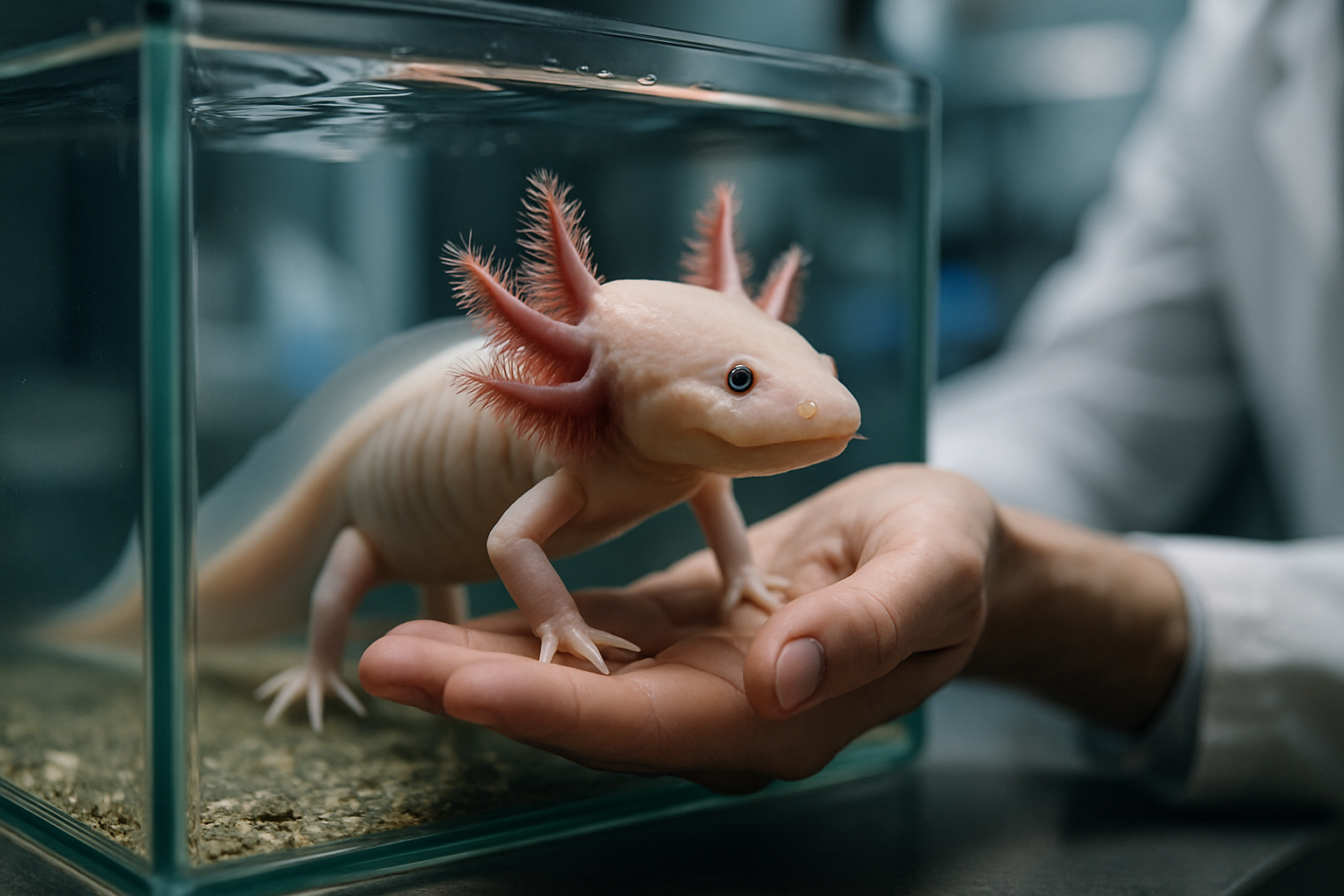Unveiling the Enigmatic World of Axolotls: Nature's Underwater Marvels
In the depths of Mexico's ancient lakes, a fascinating creature exists that seems to have stepped out of a fantasy novel. The axolotl, with its adorable smile and extraordinary regenerative abilities, has captivated scientists and animal lovers alike. This article delves into the captivating world of these aquatic salamanders, exploring their unique characteristics, conservation status, and the growing trend of keeping them as pets.

The Axolotl’s Incredible Regenerative Powers
Axolotls possess an unparalleled ability to regrow lost body parts, including their brain, spinal cord, and even heart. This remarkable talent has fascinated researchers for decades, as it far surpasses the regenerative capabilities of most other animals. Scientists have discovered that axolotls can regenerate their limbs up to hundreds of times without any loss of function or form.
The secret behind this extraordinary ability lies in the axolotl’s unique cellular structure. When an axolotl loses a limb, its cells at the site of injury dedifferentiate, essentially reverting to a stem cell-like state. These cells then multiply and redifferentiate to form new tissue, perfectly recreating the lost limb. This process has enormous implications for regenerative medicine in humans, potentially leading to groundbreaking treatments for spinal cord injuries and organ damage.
Axolotls in Their Natural Habitat
Historically, axolotls were found in abundance in Lake Xochimilco and Lake Chalco, located in the Valley of Mexico. These lakes, remnants of a vast lake system that once covered much of the Mexico City area, provided the perfect habitat for these aquatic salamanders. The cool, nutrient-rich waters allowed axolotls to thrive, reaching populations in the millions.
However, the rapid expansion of Mexico City and the subsequent drainage of these lakes has led to a catastrophic decline in wild axolotl populations. Today, it’s estimated that fewer than 1,000 axolotls remain in their natural habitat, making them critically endangered. The few remaining wild axolotls face numerous threats, including water pollution, habitat loss, and competition from invasive species introduced to their ecosystem.
Conservation Efforts and Challenges
The plight of the axolotl has not gone unnoticed, and various conservation efforts are underway to save these unique creatures from extinction. The Mexican government, in collaboration with local and international organizations, has implemented programs to restore and protect the remaining axolotl habitats in Lake Xochimilco.
One such initiative involves the creation of artificial canals and “chinampas” – small, artificial islands traditionally used for agriculture – to provide safe breeding grounds for axolotls. These protected areas aim to mimic the axolotl’s natural habitat while shielding them from predators and pollution.
Additionally, captive breeding programs have been established in zoos and research institutions worldwide. These programs not only help maintain genetic diversity but also provide valuable insights into axolotl biology and behavior. However, reintroducing captive-bred axolotls into the wild remains a significant challenge due to the degraded state of their natural habitat.
The Rise of Axolotls as Exotic Pets
While wild axolotl populations continue to dwindle, these charming creatures have found an unexpected new home – in aquariums across the globe. The unique appearance and fascinating biology of axolotls have made them increasingly popular as exotic pets in recent years.
Axolotls are relatively low-maintenance pets, requiring a well-maintained aquarium with cool, clean water and a diet of worms, small fish, and specialized pellets. Their docile nature and the fact that they remain in their larval form throughout their lives (a phenomenon known as neoteny) make them particularly appealing to exotic pet enthusiasts.
The price of a pet axolotl can vary significantly, typically ranging from $20 to $70, depending on factors such as color morph and source. However, the total cost of ownership, including the aquarium setup and ongoing care, can be considerably higher. The growing popularity of axolotls as pets has led to a burgeoning market for specialized axolotl care products, including custom-designed tanks, filtration systems, and specially formulated foods.
Ethical Considerations and Future Outlook
While the pet trade has undoubtedly contributed to maintaining axolotl populations in captivity, it also raises ethical concerns. Some experts worry that the popularity of axolotls as pets may lead to overbreeding, potentially resulting in genetic issues or the spread of diseases. There are also concerns about the welfare of these animals in captivity, as many new owners may not fully understand their specific care requirements.
Looking to the future, the fate of wild axolotls remains uncertain. Conservation efforts continue, but the challenges are significant. The axolotl’s ability to thrive in captivity offers some hope for the species’ survival, but questions remain about the long-term viability of captive populations and the possibility of successful reintroduction programs.
As research into axolotl biology continues, these remarkable creatures may hold the key to groundbreaking medical advancements. Their regenerative abilities could potentially revolutionize treatments for a wide range of human injuries and diseases. In this way, the humble axolotl may not only ensure its own survival but also contribute significantly to human health and well-being.
The story of the axolotl is one of resilience, adaptation, and the complex relationship between humans and the natural world. As we continue to unravel the mysteries of these fascinating creatures, we are reminded of the importance of conservation and the incredible diversity of life on our planet. The axolotl stands as a symbol of nature’s ingenuity and the urgent need to protect and preserve the unique species that share our world.




